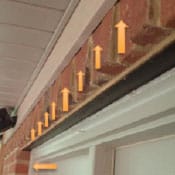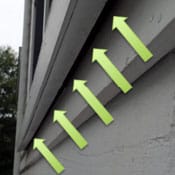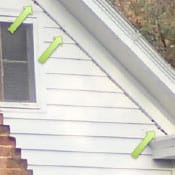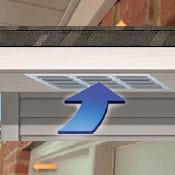Click To Call > (800) 966-7673
Wednesday, August 15, 2018
As we discussed in Part I of our series about how to prevent overwintering pests, the first step is identifying what type of pest you are dealing with. Common overwintering pests in the Great Lakes region of Michigan, Indiana, and Ohio are:
These unwanted pests reside in the Great Lakes Region and can create problems from fall into spring.
Seal them out of the house. While sealing insects completely out may not be realistic, every little bit helps. In fact, with a little effort, you can make a big difference in the number of uninvited pests and rodents you entertained this winter.
The first step is to identify openings, gaps, and other entry points pests use to get into your house. Watch this video with Rose Entomologist Mark Sheperdigian on the Rose youtube channel to get a closer look at how these DIY processes are done.
The joint between two bricks is generally a little lower than the face of the bricks and, will create a gap when straight elements of construction lay across it (such as siding and molding). Here you can see a slim crack along the line of bricks where insects enter your home. Also, notice the gap under the steel plate that overtops the door. These gaps should be closed with a sealant.

Most window frames are carefully caulked and sealed on the top and sides to keep out water, but the underneath may not be caulked at all, allowing an easy point of entry for insects and spiders.

The uneven surface of the clapboard creates a gap in every board. These gaps can be caulked, but it may be easier to stuff them with a foam-insulating cord.

Be sure attic and soffit vents are backed with a screen if they aren’t already. If they are, check to make sure there are no holes, tears, or gaps in the screen where bugs, bats, and rodents can squeeze in.

Anywhere there is a hole for vents, pipes, cables, and such, the opening should be sealed shut. Bugs can find their way into even the smallest openings. This can be done several ways, but stuffing gaps with flexible, breathable material is best. An old green pot scrubber works wonderfully to seal insects out, and it won’t rust away. A new scrubber will work too, but pre-used scrubbers are much more flexible.
Of course, the easiest way to keep bugs, pests, and rodents out this winter is to call Rose Pest Solutions. An inspection in the fall can go a long way toward keeping pests and mice out of your home or business this winter.
In the pest control business, we call materials used to prevent pests from entering your home “exclusion materials”. These commonly available pest-proofing products not only help prevent overwintering pests, they’re also a simple way to keep year-round nuisance critters like mice and bats out of your home or business.
If you missed our previous article HOW TO IDENTIFY OVERWINTERING PESTS - PART 1 OF 2 click on the link to see images that will help you identify which overwintering pest you are dealing with.